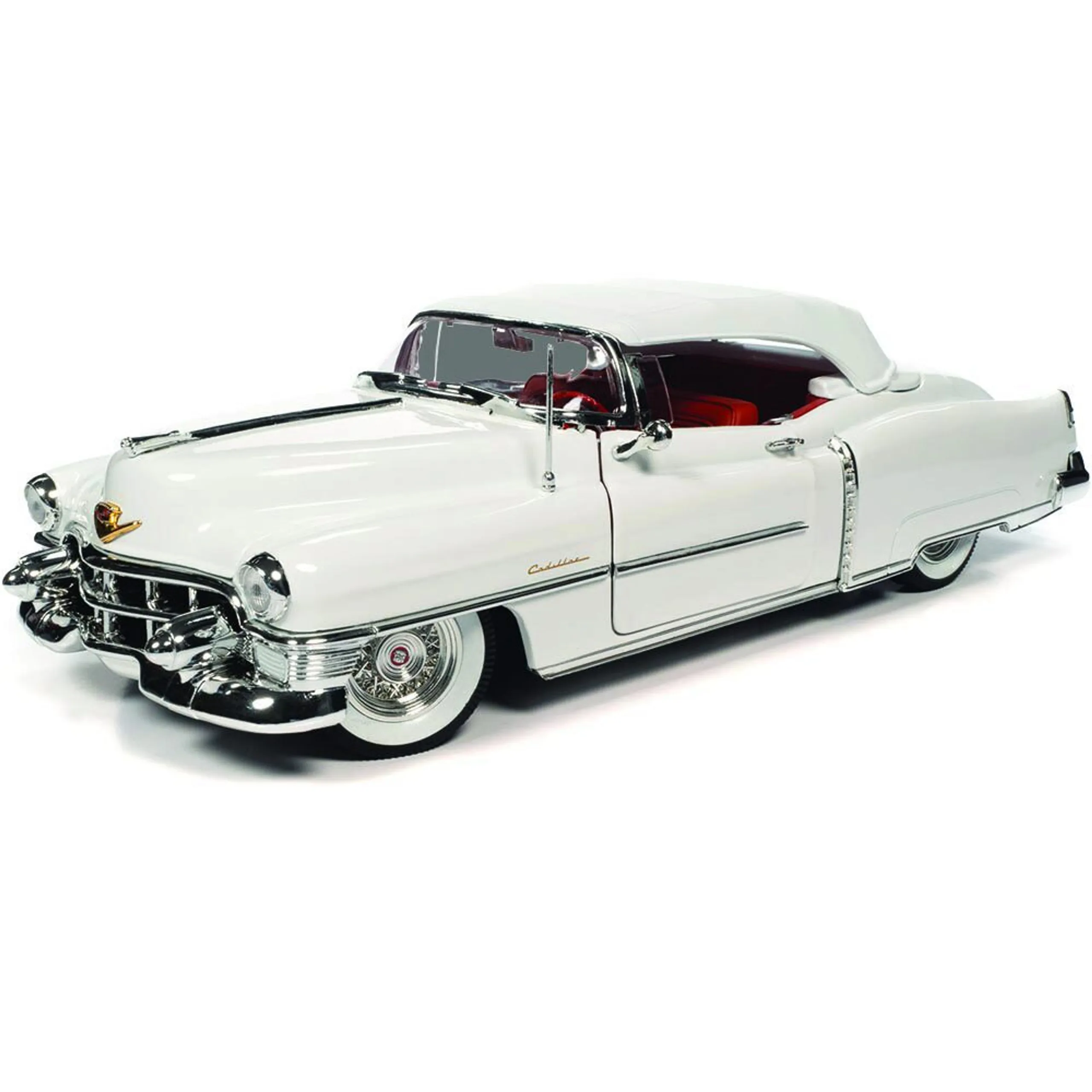Understanding Diecast Toy Car Scales
Diecast toy cars have captured the hearts of collectors and enthusiasts for generations, with their intricate details and the thrill of owning miniature replicas of iconic vehicles. One of the most fundamental aspects of collecting these miniature marvels is understanding the concept of scale. Scale in the world of diecast cars refers to the ratio between the size of the model and the actual size of the real-life car. Choosing the right scale is crucial, as it impacts everything from the level of detail to the space required to display your collection. This guide will help you navigate the world of diecast car scales and make informed decisions for your collection.
The Importance of Scale in Collecting
Scale is a cornerstone of diecast car collecting, shaping the experience and aesthetic of your collection. The scale you choose influences the overall presentation, the details, and even the types of cars available. Scale determines the level of detail that can be realistically represented on the model. Larger scales often allow for more intricate detailing, such as opening doors, detailed engines, and realistic interiors. Smaller scales, while offering less detail, provide the benefit of compactness, enabling collectors to amass a large collection without requiring excessive display space. Each scale offers its unique charm, catering to different preferences and collecting goals. Whether you are a beginner or an experienced collector, understanding scale will help you make better choices.
Why Scale Matters
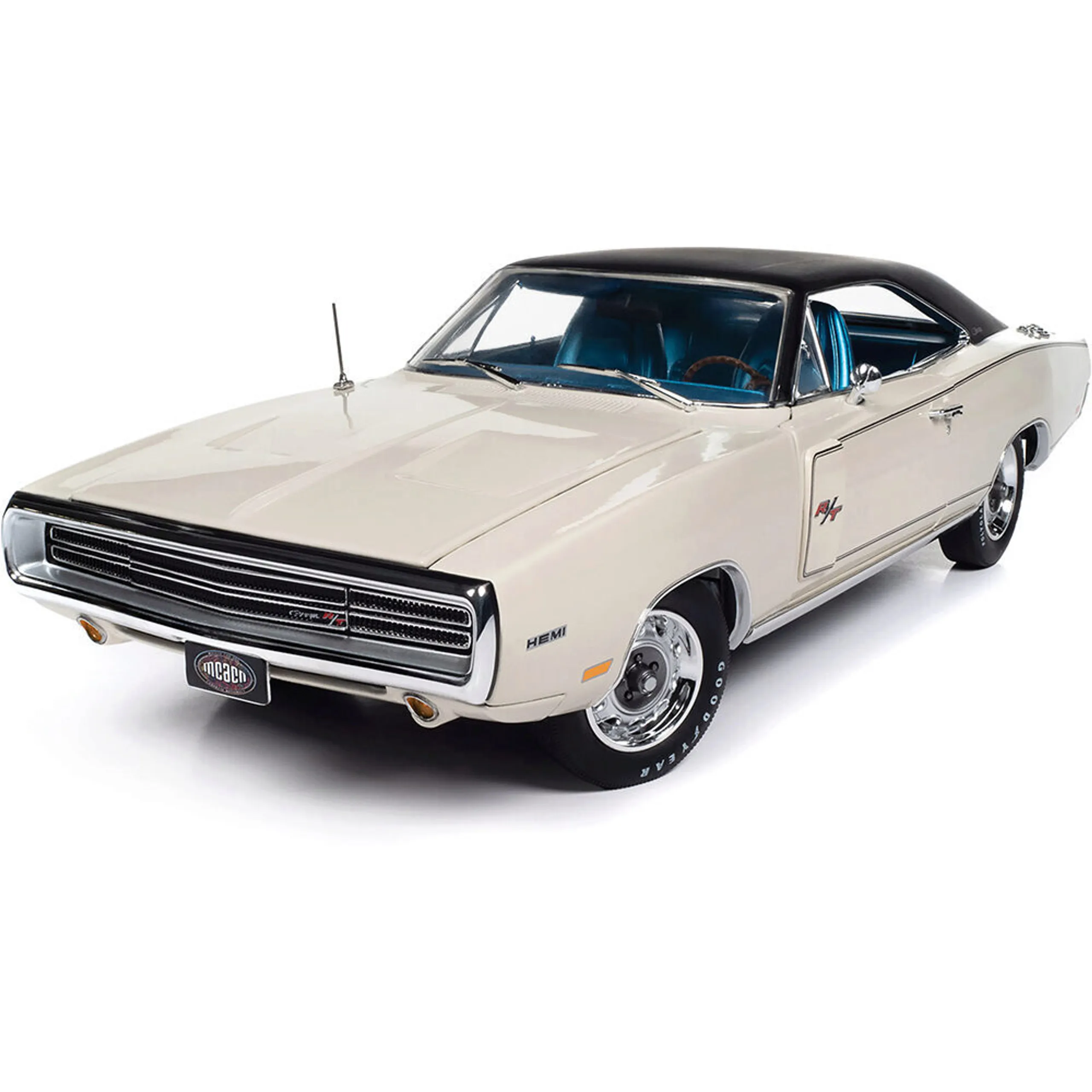
The scale of a diecast car directly impacts several key aspects of your collecting experience. Scale determines the size of each model, which influences the space you need to store and display your collection. Larger scales, such as 1:18, require more room than smaller scales, like 1:64. Furthermore, scale affects the level of detail and realism possible. Larger scales generally allow for more intricate features, while smaller scales may sacrifice some detail for the sake of compactness. Finally, scale influences the price and availability of models. Certain scales are more common or more popular, affecting both the prices you’ll pay and the range of cars you can find. Understanding these aspects will help you make informed collecting choices.
Common Diecast Toy Car Scales
Several scales dominate the diecast toy car market, each with its own characteristics and appeal. Understanding these scales is crucial for any collector. These scales provide a variety of options to suit different preferences, display spaces, and collecting budgets. From the highly detailed 1:18 scale models to the compact and affordable 1:64 scale cars, each scale offers unique benefits. Let’s explore the most popular diecast toy car scales in detail.
1:18 Scale
The 1:18 scale is one of the most popular among serious collectors. These models are approximately 1/18th the size of the real car. Due to their larger size, 1:18 scale models often feature a high level of detail. This includes opening doors, hoods, and trunks, detailed engine compartments, realistic interiors, and even functional steering. The larger size allows for a more immersive and tactile experience, making them ideal for those who appreciate intricate details and a premium collecting experience.
Details of 1:18 Scale Models
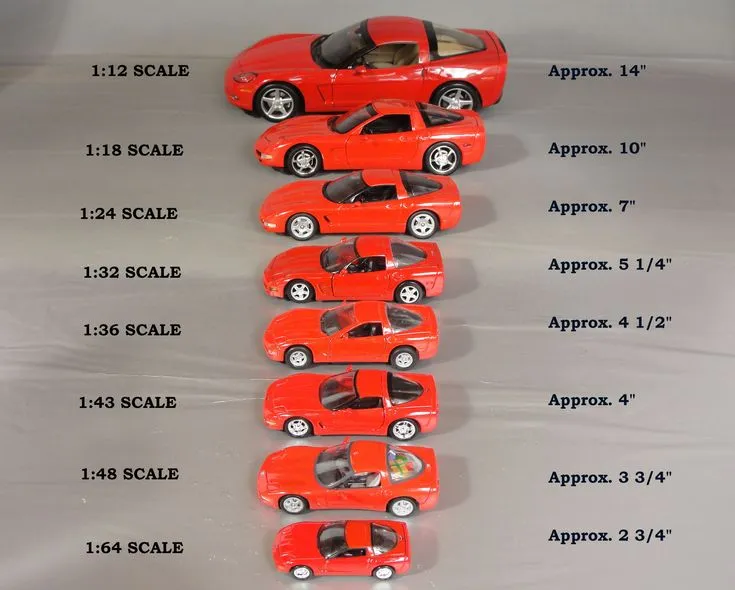
Models in 1:18 scale are known for their exceptional level of detail. The manufacturers often include meticulously replicated engine components, highly detailed interiors with accurate dashboard designs, and realistic paint finishes. Collectors enjoy being able to examine these models closely. The working features like doors and steering add to the authenticity. Due to their size and detail, 1:18 scale models are often more expensive than smaller scales, reflecting the higher production costs and complexity. The amount of detail makes 1:18 scale a desirable choice for many enthusiasts.
1:24 Scale
The 1:24 scale offers a balance between detail and size. These models are slightly smaller than 1:18 scale. While not as large, they still provide a good level of detail and are often more affordable and easier to display. 1:24 scale models typically feature opening doors, detailed interiors, and accurate exterior designs. They are a popular choice for collectors who want a detailed representation of their favorite cars without requiring too much display space.
Features of 1:24 Scale
1:24 scale models often replicate many of the features found in larger scales, but in a more compact package. These models often have opening doors, hoods, and trunks, along with detailed interior features such as seats, dashboards, and steering wheels. The exterior details are also well-executed, with accurate paint finishes and realistic detailing of headlights, taillights, and other features. 1:24 scale models strike a good balance between detail and affordability, making them accessible for many collectors. They represent a fantastic option for starting or expanding a collection.
1:43 Scale

1:43 scale is a very popular scale, especially for collectors who want a diverse collection without needing a lot of space. These models are significantly smaller, allowing for a larger number of cars to be displayed in a limited area. The detail level is generally good, although it may not be as intricate as in larger scales. Many collectors appreciate the wide variety of vehicles available in this scale. It’s a great choice for those who want a varied collection without taking up too much room.
Key Characteristics of 1:43 Scale
1:43 scale models are known for their collectibility. These models offer a vast array of car models from different eras and manufacturers. They are often displayed on shelves or in display cases, which is great for showcasing many cars. While the detail might not match the higher levels of 1:18 scale, these models still feature accurate body designs, paint finishes, and essential details. Their small size and reasonable price make 1:43 scale a favorite for new and experienced collectors. These models are frequently used to create dioramas and detailed scenes.
1:64 Scale
1:64 scale models are the smallest of the commonly collected diecast cars. These models are extremely compact and affordable, making them ideal for new collectors and those with limited space. Despite their size, many manufacturers have managed to include incredible detail. They are often found in toy stores and are easy to find. 1:64 scale models are a great way to build a diverse collection without a big investment. Their affordability and ease of storage are huge advantages.
Advantages of 1:64 Scale
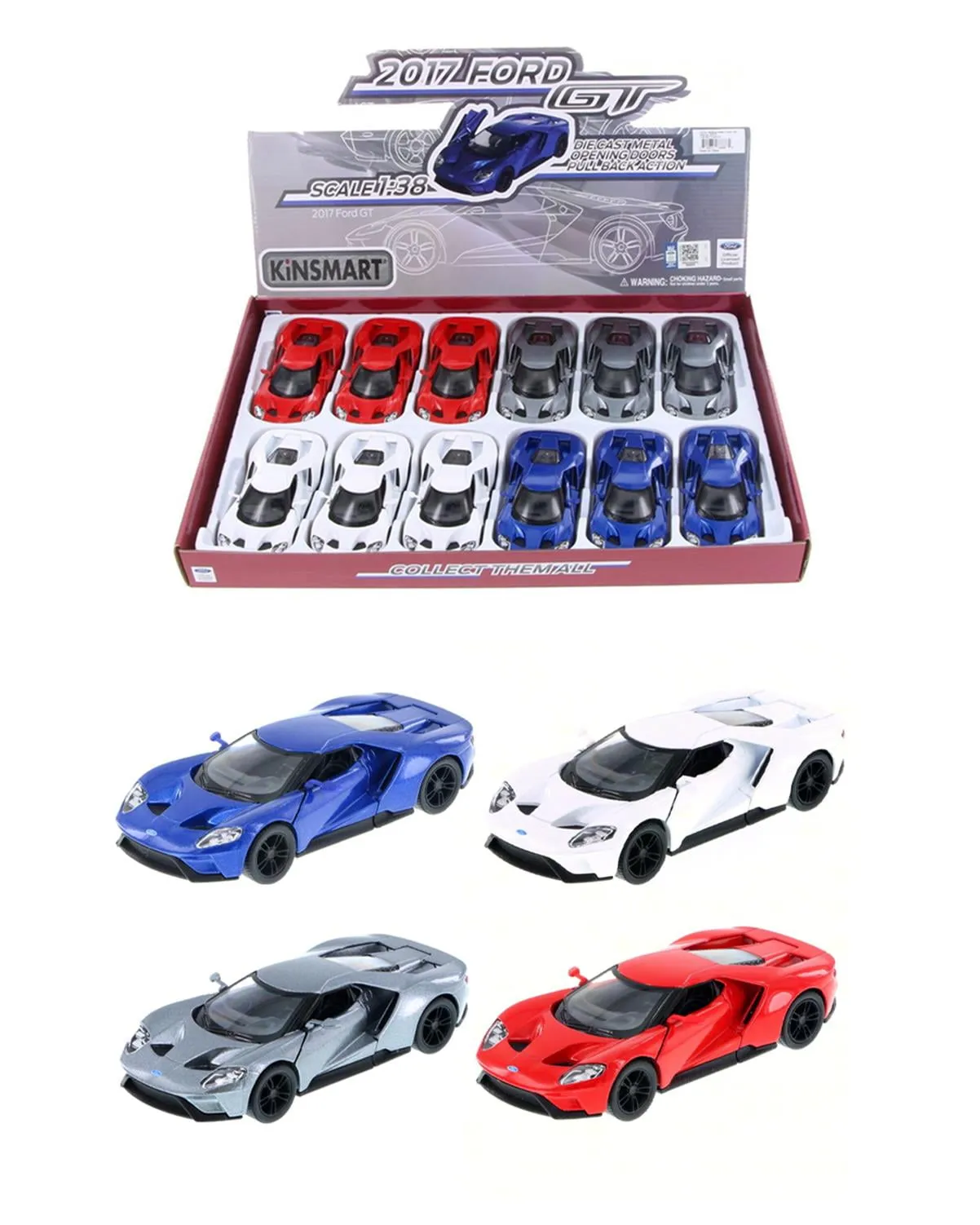
The 1:64 scale offers many advantages for collectors. Their small size makes them easy to store and display, requiring minimal space. These models are generally very affordable, allowing collectors to amass a large collection without a significant financial commitment. The availability of 1:64 scale models is extensive, including a wide variety of cars, from classic models to modern sports cars. They are perfect for kids and adults. Also, these models are great for creating dioramas and display arrangements due to their small footprint.
Other Scales and Considerations
Besides the main scales mentioned, there are other scales that collectors may encounter. Scales like 1:32 and 1:50 exist and are also available, though less common. When choosing a scale, it’s essential to consider the availability of models in the type of car you are interested in. Some scales may have a wider selection of certain car brands or models than others. It is good to research and identify which scales best suit your preferences. Make sure to compare details, quality, and features for the best collecting experience.
Factors Influencing Scale Choice
The decision of which scale to collect is a personal one, influenced by several key factors. These factors should be considered to ensure you are building a collection that you will enjoy for years. It is important to balance your collecting goals with practical considerations. Thinking about these factors will help make your collecting experience more rewarding. Let’s explore some of the most significant factors in detail.
Collecting Space

The amount of space you have available for displaying your collection is a crucial factor. Larger scales, like 1:18, require significantly more space per model than smaller scales. If you have limited display space, consider smaller scales such as 1:64 or 1:43. These scales allow you to showcase a greater number of models without overcrowding your display area. Evaluate your current space and consider how you plan to expand your collection over time when choosing a scale.
Budget Considerations
The price of diecast models varies significantly based on the scale and level of detail. Larger scales often cost more due to the increased manufacturing complexity and materials. Smaller scales are typically more affordable, allowing you to purchase more models within your budget. If you are just starting, a smaller scale may be more budget-friendly. Set a realistic budget and determine how many models you can acquire in your desired scale.
Desired Level of Detail
The level of detail you want in your models is a significant factor. Larger scales often allow for more intricate features, such as opening doors, detailed engines, and realistic interiors. If you appreciate these finer details, a larger scale might be a good choice. However, even smaller scales can offer impressive levels of detail with advancements in manufacturing techniques. Think about what features are most important to you.
Where to Buy Diecast Toy Cars
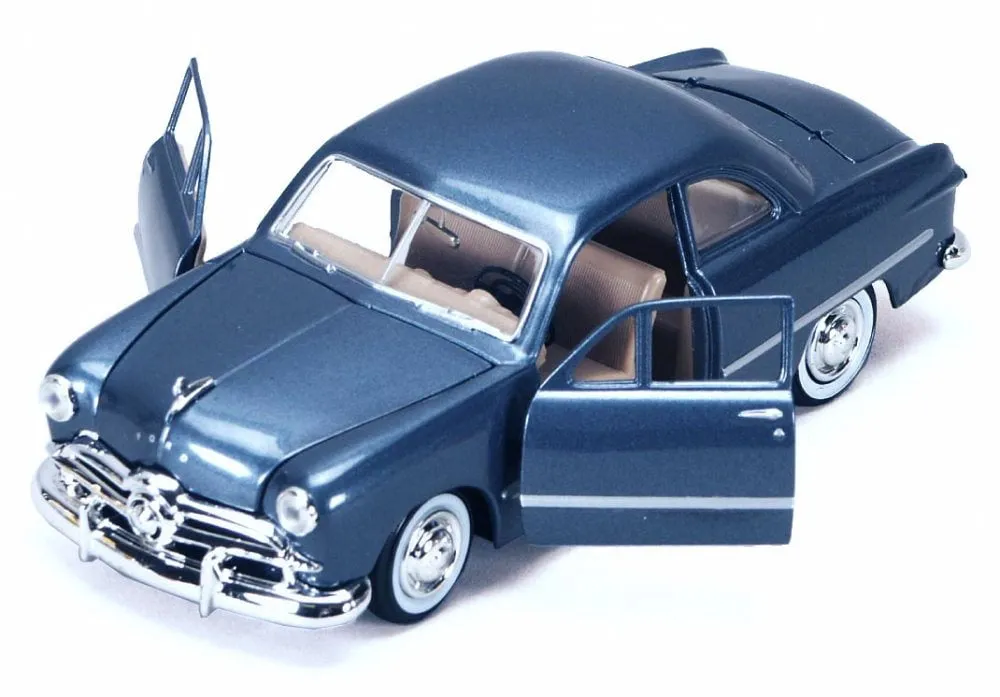
Finding the right place to purchase diecast toy cars is an important aspect of starting or growing your collection. Several avenues offer a wide selection of models, from online marketplaces to specialty shops. Knowing where to look will help you find the cars you are looking for, at the best prices. There are many options for finding diecast cars. Here’s a guide to the best places to find the perfect additions to your collection.
Online Retailers
Online retailers offer a vast selection of diecast cars, often with competitive pricing and the convenience of home delivery. Amazon and eBay are great places to start because they feature a huge number of sellers. Specialty online stores that focus specifically on diecast models may also be a fantastic option. Before making a purchase, read reviews, compare prices, and check the seller’s reputation to ensure a satisfying buying experience. Online retailers are great for finding a huge variety of models.
Specialty Diecast Shops
Specialty diecast shops provide a curated selection of models. The staff can also offer expert advice and help you discover rare or hard-to-find items. These shops provide a great experience for collectors who enjoy the social aspect of collecting. They offer personalized service and are a great place to ask questions about the cars you are interested in. Visiting a specialty shop is a great way to learn about the hobby.
Auctions and Collectibles Fairs
Auctions and collectibles fairs are another great way to find diecast toy cars. These events offer the opportunity to discover rare and vintage models that you might not find elsewhere. Auctions can be exciting, allowing collectors to bid on unique items. Collectibles fairs often bring together dealers, giving you the chance to see many models. These venues are perfect for experienced collectors and offer great opportunities for adding to your collection.
Conclusion
Choosing the right scale for your diecast toy car collection is a crucial decision that will shape your collecting experience. By understanding the factors that influence scale choice, and by considering your collecting space, budget, and desired level of detail, you can build a collection that brings you years of enjoyment. Embrace the joy of collecting, explore the different scales available, and build your collection in a way that reflects your individual preferences. Whether you are drawn to the intricate detail of larger scales or the compact affordability of smaller ones, the world of diecast cars offers something for everyone.
